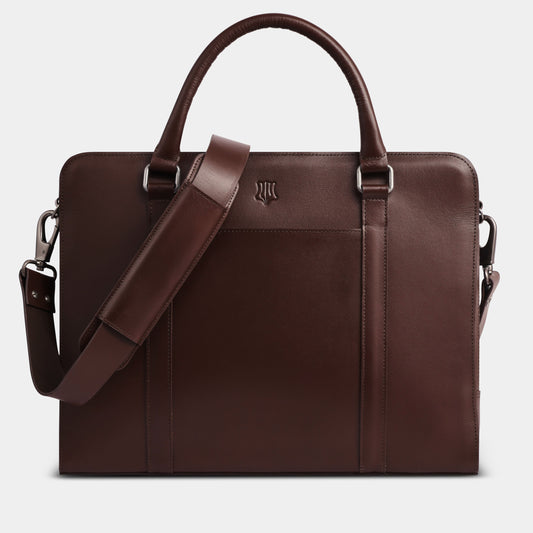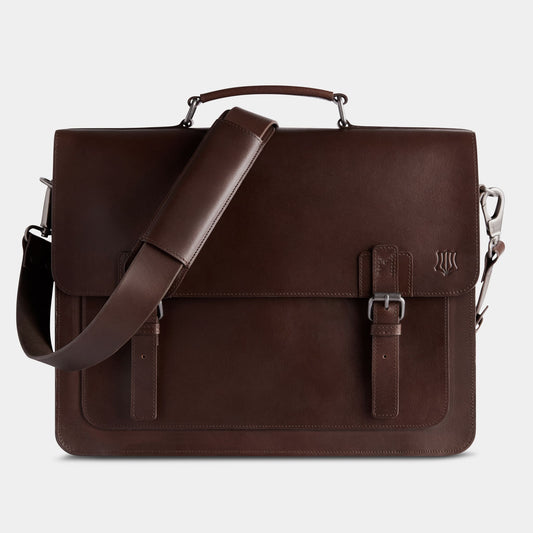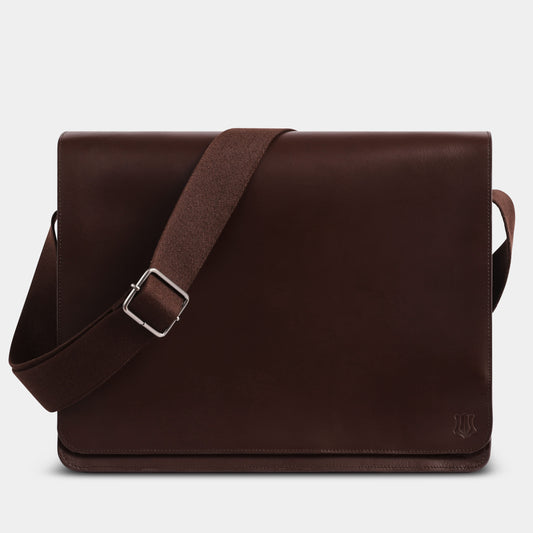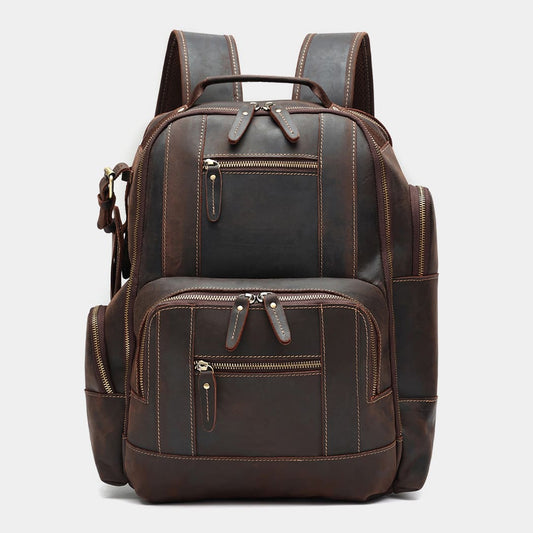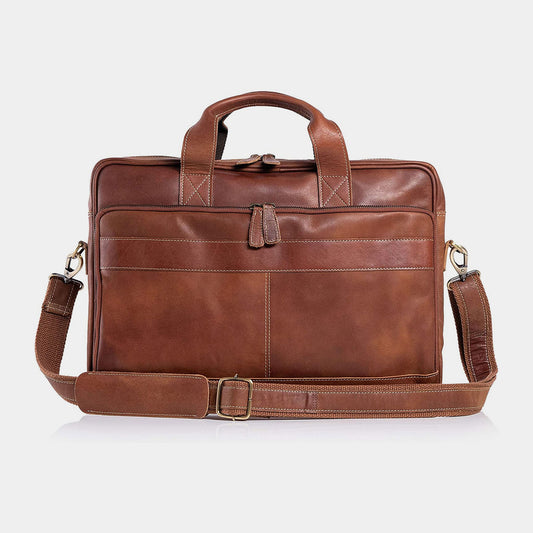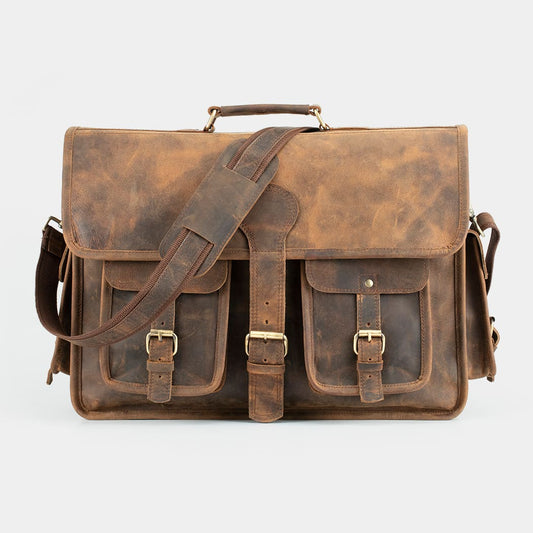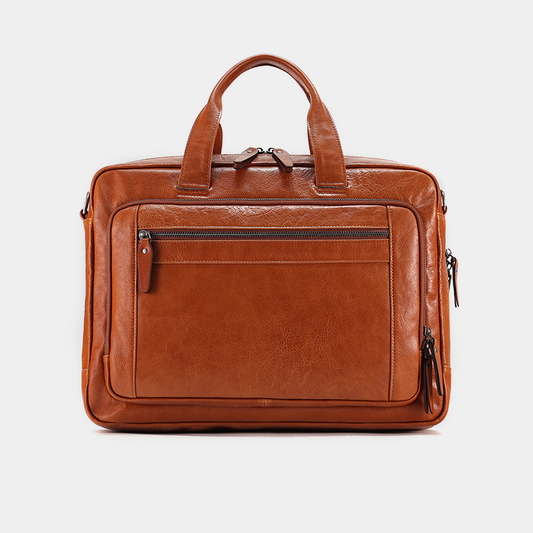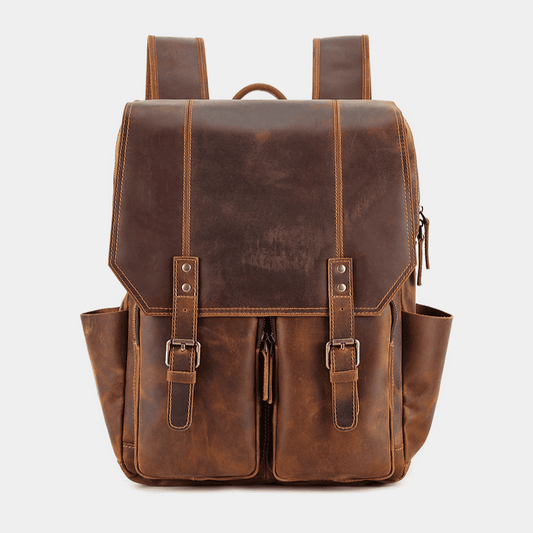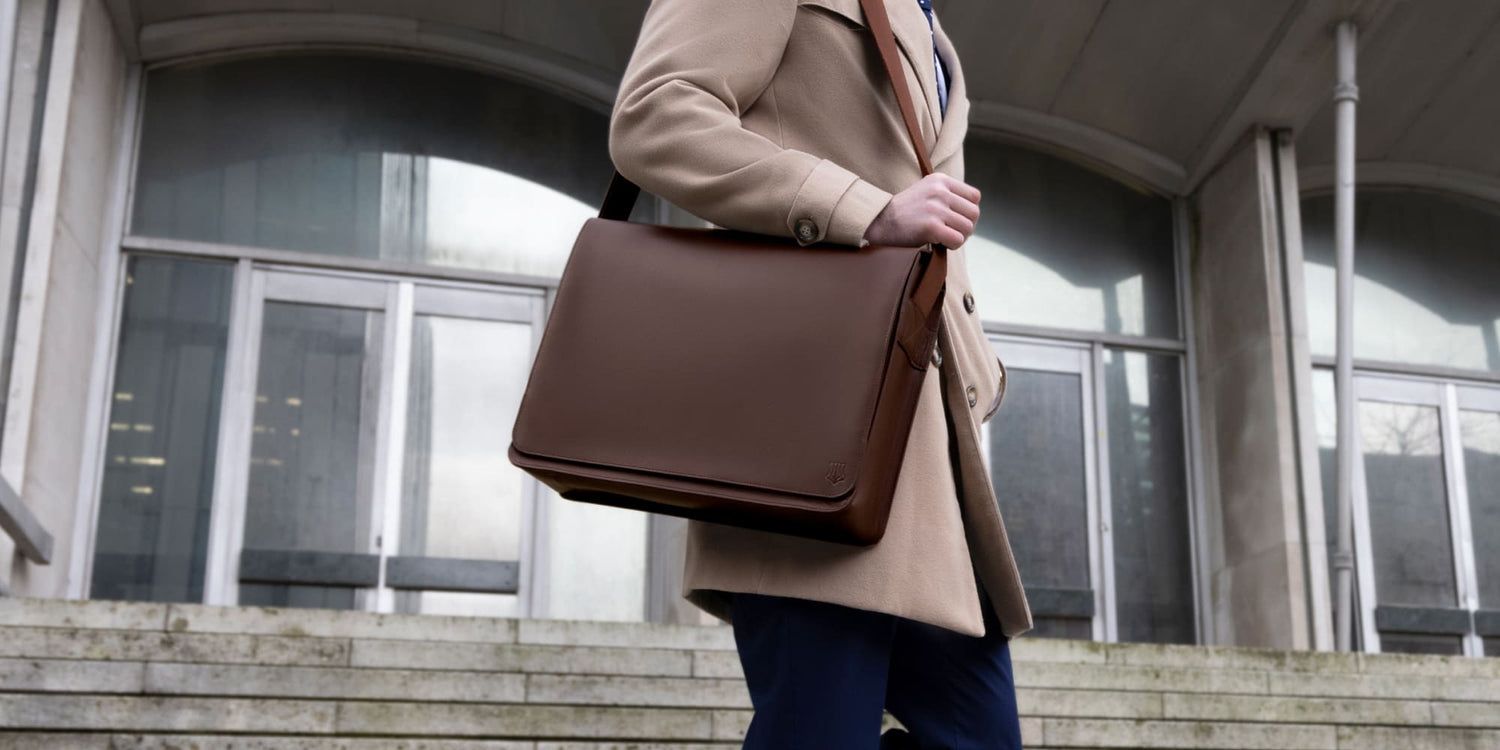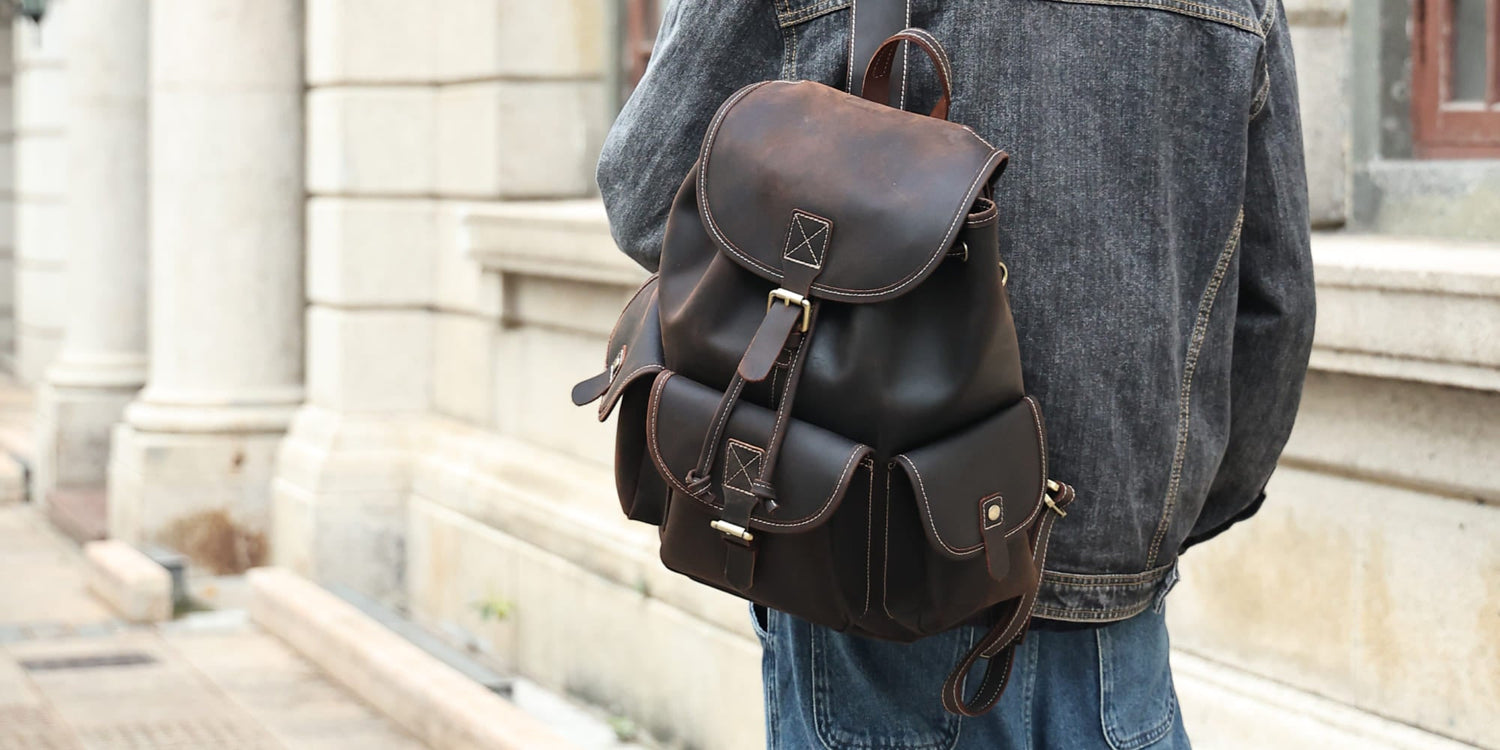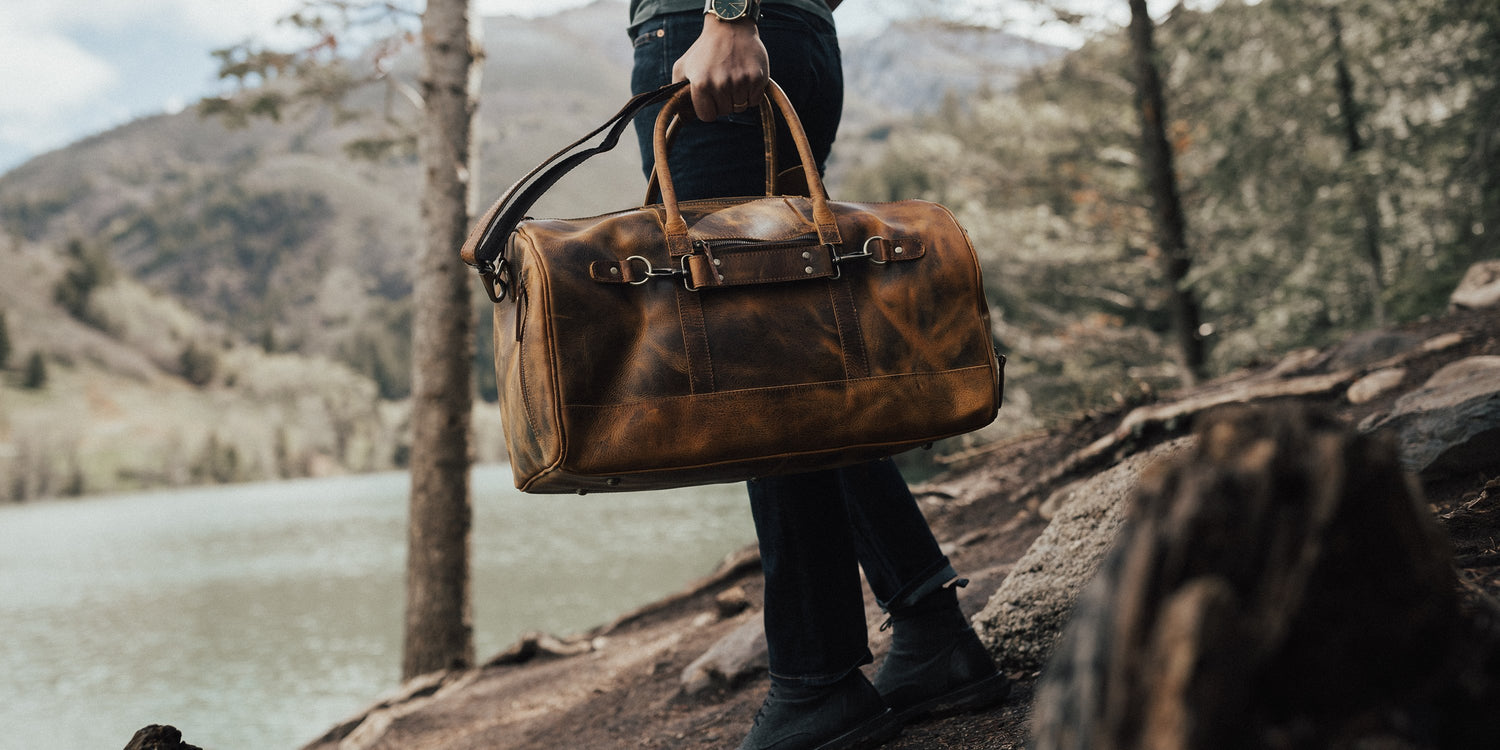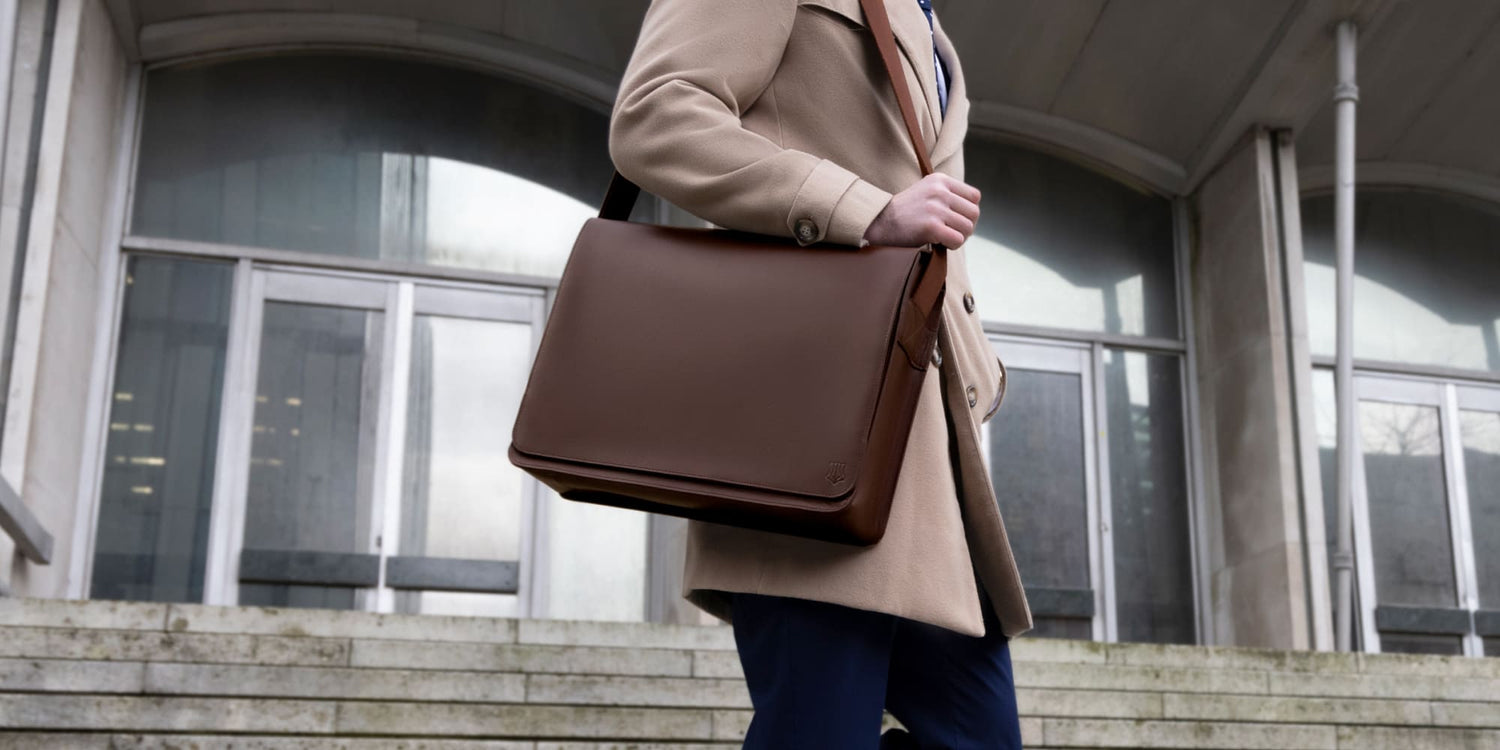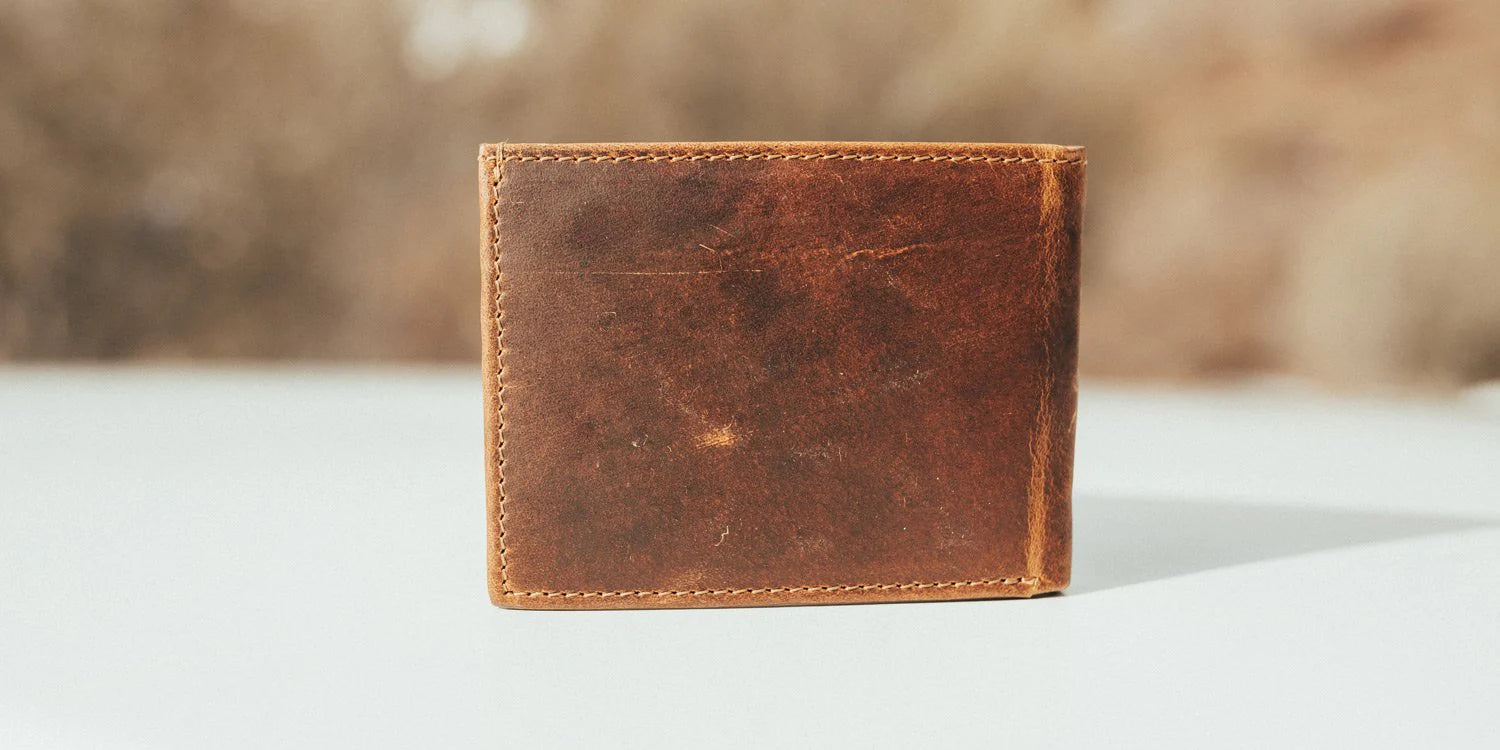As experts in high-quality leather products, we’ve curated a guide with everything you need to know about how to soften leather and properly care for your real leather goods.
Real leather is a durable and versatile luxury material that has been used for centuries to make a wide range of products, from clothing and bags to furniture.
Over time, leather can become stiff and rigid for a number of reasons, which can make it less comfortable to wear or use. Fortunately, there are several methods for softening leather and restoring it to its original suppleness and flexibility.
The Prime, an everyday staple made from high-quality leather.
Why Does Leather Go Hard or Rigid?
Products like real leather bags can last for decades but only if they’re properly cared for. You should treat leather goods as you might your own skin and moisturize them to prevent them from going dry and aging.
Leather is a natural material that needs to be moisturized regularly in order to maintain its softness and flexibility. If leather is not properly moisturized using creams or conditioners, it can become dry and stiff over time, especially when exposed to high temperatures or direct sunlight.
Exposure to chemicals, such as harsh cleaning agents or solvents, can also damage the fibers of the leather and cause it to become stiff and rigid, which is why using the right leather cleaning products is important.
Leather that is old or has been stored for a long time without being used can naturally become stiff and rigid. As leather ages, the natural oils and moisture in the material evaporate, causing it to lose its suppleness.
The Sitka, a stylish real leather bag
Are Different Leathers More Prone To Stiffening?
Yes, different types of leather can stiffen differently. The stiffness or rigidity of leather depends on several factors, such as the type of animal hide it is made from and the tanning process used to treat the leather.
The quality of the leather can also affect how stiff it is. Higher quality leather, like the type used to create our stylish Sitka bags, tends to be more supple and flexible than lower quality leather, which can be stiffer and more prone to cracking.
It's important to keep in mind that different types of leather may require different methods for softening, depending on their individual characteristics. It's always a good idea to research the specific type of leather you are working with and follow the recommended methods for softening it. Our bags are made from the highest quality leather and each product has recommendations for maintaining and caring for your latest purchase.
The Jones, a spacious, high-quality real leather messenger bag
How To Soften Leather in 3 Easy Steps
If you find that your leather has become rigid, it can be softened in three easy steps:
- Clean the leather: Use a soft cloth or brush to gently remove any dirt, dust, or debris from the leather. If the leather is very dirty, use a mild soap and water solution to clean it. Be sure to rinse thoroughly and allow the leather to dry completely. When you are drying the leather you should allow it to dry naturally. Using radiators or heaters can misshape the leather.
- Apply a leather conditioner: Once the leather is clean and dry, apply a good leather conditioner or softener. Apply the conditioner in a circular rubbing motion being sure to cover any creases or folds.
- Massage the leather: To further soften the leather, gently massage it with your hands. This will help to work the conditioner into the fibers of the leather, and will help to stretch and loosen the leather. Be gentle when massaging the leather to avoid damage to the material.
Kodiak Leather Cream, high-quality conditioner for softening leather
Repeat these steps as necessary until the leather has reached the desired softness. Keep in mind that some types of leather may take longer to soften than others, and that excessive or improper conditioning can damage the leather.
Repeat these steps as necessary until the leather has reached the desired softness. Keep in mind that some types of leather may take longer to soften than others, and that excessive or improper conditioning can damage the leather.
Repeat these steps as necessary until the leather has reached the desired softness. Keep in mind that some types of leather may take longer to soften than others, and that excessive or improper conditioning can damage the leather.
Do’s & Don’ts For Softening Leather
Do:
- Do clean the leather thoroughly before softening it.
- Do choose a leather conditioner or softener that is appropriate for the type of leather you are softening.
- Do apply the conditioner or softener evenly over the surface of the leather, and work it into any creases or folds in the leather.
- Do be patient when softening leather. It may take some time for the conditioner or softener to fully penetrate the leather and soften it.
- Do use your hands to gently massage the leather to help further soften it.
- Do use your bag. High-quality bags are durable and designed to withstand repeated use. Cleaning your products regularly helps to make them last longer.
The Man Bag, a convenient and comfortable real leather bag for everyday use.
Don't:
- Don't use too much conditioner or softener. Excessive use of these products can damage the leather.
- Don't use harsh chemicals or cleaning agents on the leather, as they can damage the fibers of the leather and make it more difficult to soften.
- Don't expose the leather to excessive heat or direct sunlight, as this can cause the leather to become dry and brittle.
- Don't use a hair dryer or other heat source to try to speed up the softening process, as this can damage the leather.
- Don't use a wire brush or any other abrasive tool to clean or soften the leather, as this can scratch or damage the surface of the leather.
Alternative Methods For Softening Leather
There are a couple of alternatives you can try to soften your leather. When using products on leather be sure to test a small amount in a non-visible place before you apply it to the full product. Some oils and creams may not be suitable for certain products so it’s best to test them first.
Some types of oil, such as coconut oil or olive oil, can help to soften and moisturize leather. Apply a small amount of oil to the leather and massage it gently with your hands. Be sure to use a high-quality, food-grade oil, and test a small, inconspicuous area of the leather first to make sure the oil does not discolor or damage the leather.
Water can also help to soften leather by making it more pliable. Dampen a soft cloth with water and gently rub it over the surface of the leather. Then, use your hands to massage the leather and help stretch and loosen it. Be sure to allow the leather to dry completely before using it again.
It's important to keep in mind that these methods may not be suitable for all types of leather, and may require some trial and error to find the best approach for your specific leather item.
The Cross, a useful and fashionable staple for any wardrobe.
Browse our full collection of high-quality leather bags with care instructions.







